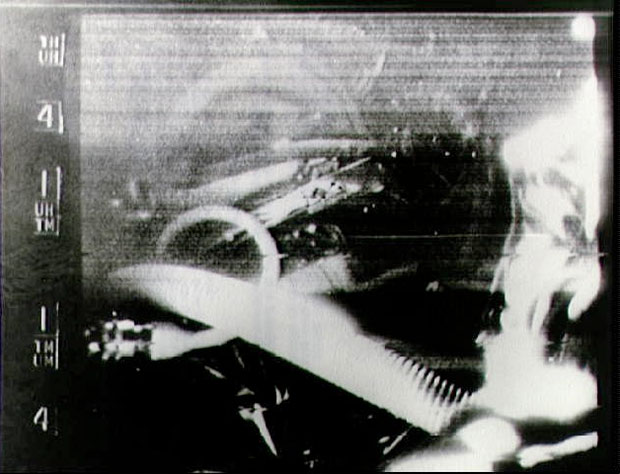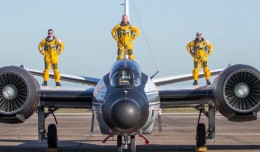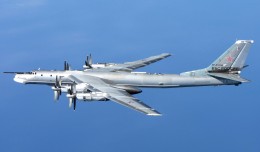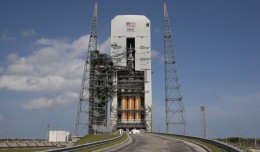1987: The USSR launches the Polyus spacecraft, designed to destroy American “Star Wars” satellites with high-powered lasers, but it fails to reach orbit.

Astronaut L. Gordon Cooper's face is visible in the background while his oxygen hose stands out clearly in this picture made from the broadcast of a live TV camera onboard "Faith 7" during the 17th orbit. The picture was received at Cape Canaveral, Florida, one of three points set up to receive the slow-scan TV picture. (Photo courtesy of NASA)
1963: The spacecraft Faith 7 launches on Mercury-Atlas 9, the final mission of the U.S. Mercury program. Pilot Gordon Cooper becomes the first American to spend more than a day in space before splashing down 34 hours later.
1960: The Soviets launch Sputnik 4.
1958: The USSR launches Sputnik 3 for the second time, following a failed launch about 2 weeks earlier.
1967: Over Malden Island in the south Pacific, a British Vickers Valiant piloted by Kenneth Hubbard drops the nation’s first nuclear bomb in a test called Operation Grapple. Designed to yield a one megaton explosion, the bomb fails to detonate properly and only disperses about 300 kilotons.
1940: World War II: British bombers make their first runs over Germany.
1936: British aviation pioneer Amy Johnson returns to England after a record-breaking flight to South Africa in a Percival Gull (G-ADZO).
1930: Refusing to hire a female pilot, Boeing Air Transport brings on Ellen Church as the world’s first flight attendant.
1928: In a preview shown at a Los Angeles movie theater, Mickey Mouse makes his debut in a cartoon called Plane Crazy, an animated homage to Charles Lindbergh. Walt Disney fails to find a distributor for his first Mickey cartoon until March 1929, five months after Steamboat Willie‘s release. Despite Plane Crazy being produced earlier, Disney considers Steamboat Willie to be Mickey Mouse’s debut.
1928: Using a single de Havilland DH.50, the Royal Flying Doctor Service of Australia is founded by the Reverend John Flynn to care for patients in remote areas of the country.
1922: Instone Air Line begins service between London and Brussels. It would eventually be absorbed by Imperial Airways, which itself would later merge with British Overseas Airways Corporation, which would later merge with British European Airways to form today’s British Airways.
1918: The first regular US airmail service is commenced between New York and Washington DC.
1793: Spanish inventor Diego Marín Aguilera flies a glider nearly 1/4 mile in one of the first human attempts at flight.







